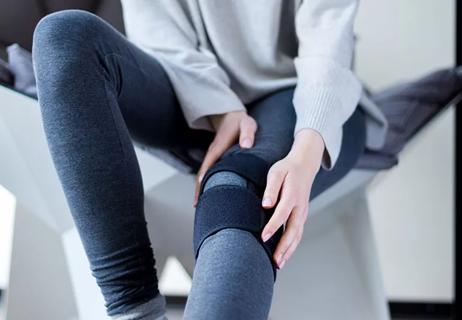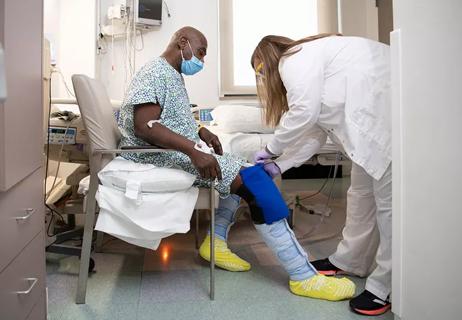Total knee replacement is surgery to replace your knee joint with an artificial (prosthetic) one made of metal and plastic. A surgeon will take out your knee joint and insert artificial replacement parts.
Advertisement
Cleveland Clinic is a non-profit academic medical center. Advertising on our site helps support our mission. We do not endorse non-Cleveland Clinic products or services. Policy
These days, knee replacements are some of the most successful surgeries. More than 9 in 10 people have noticeably less pain after they recover.
You might need knee replacement surgery if you have severe symptoms that make it hard to move or use your knee. This can include issues like pain, stiffness or a decreased range of motion. Eventually, symptoms might be so bad that you start avoiding some of your usual activities.
Your healthcare provider will try other, nonsurgical treatments first. But if these don’t manage the symptoms, they might suggest knee replacement surgery.
A knee replacement usually takes an hour or two. Your surgeon will make an incision on the front of your knee. Then, they’ll remove all the damaged cartilage inside it. Your surgeon will reshape your bones and insert metal caps on their ends. After that, they’ll insert the prosthetic knee. If you have arthritis under your kneecap, they’ll resurface that, too.
It usually takes around a year to recover. Your surgeon will give you a customized recovery plan. But in general, you’ll start walking and using your knee right away. Your care team will help you manage pain after the surgery and while you recover.
Physical therapy (PT) will be a big part of your recovery. You’ll work with a physical therapist for a few months. They’ll help you start to move almost right away. PT will help you bend your knee, walk and regain your strength and range of motion.
You should feel much better and stronger after about six weeks. Three to four months after your surgery, you should be able to resume almost all your usual activities. You might even notice you can get back to doing things you couldn’t before surgery.
Advertisement

After knee arthroplasty, swelling-related pain is common, but infection and blood clots are also risks

Full recovery takes a year or more, but you’ll likely be walking and driving within a few weeks if you follow your provider’s recovery plan

You may have to keep your leg straight, but you can sleep in any position

Keep the area clean and monitor your incision site for discharge, odor or a change in appearance

Your age and other factors may affect this injury

Plus, tips on how to recover